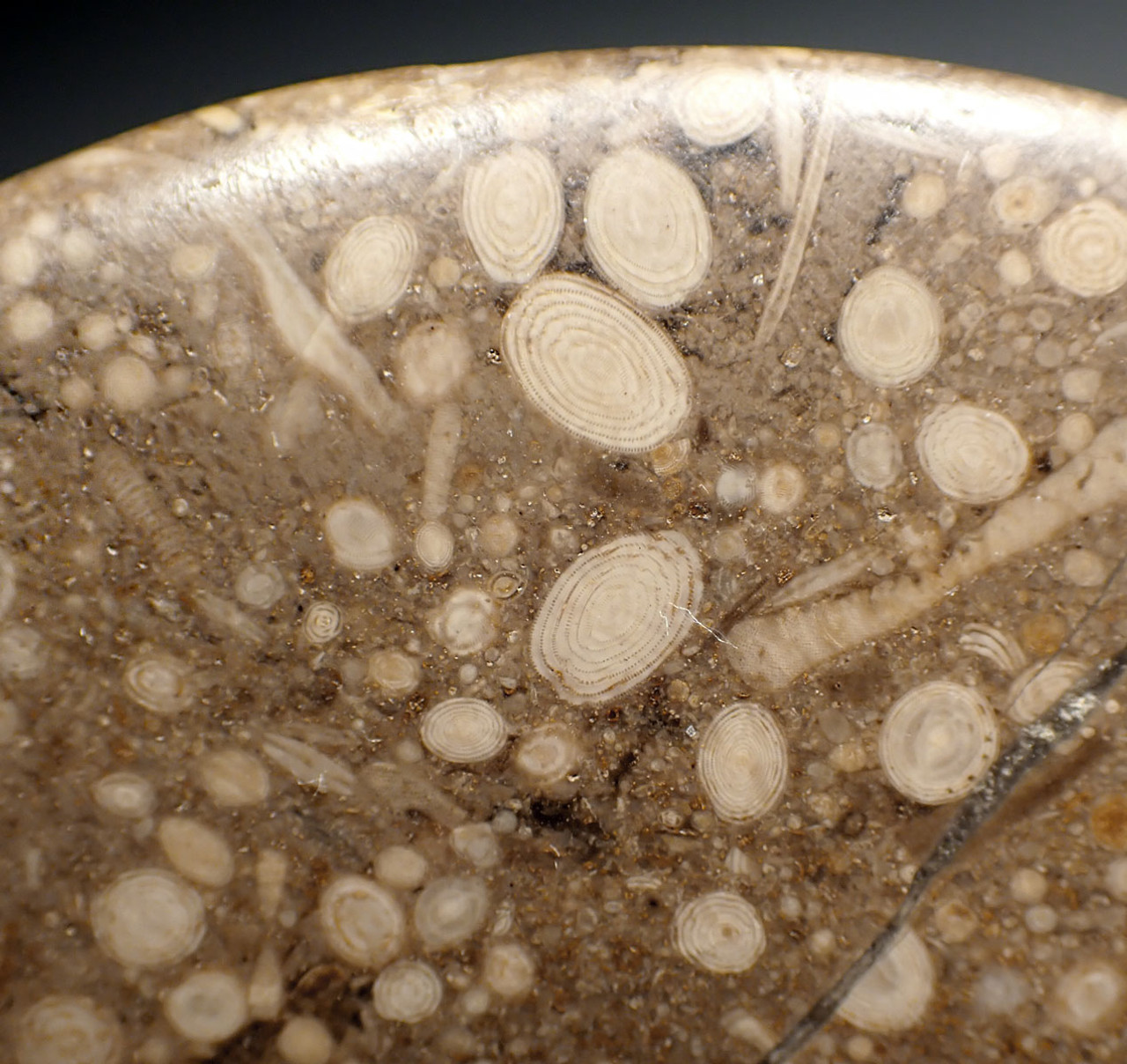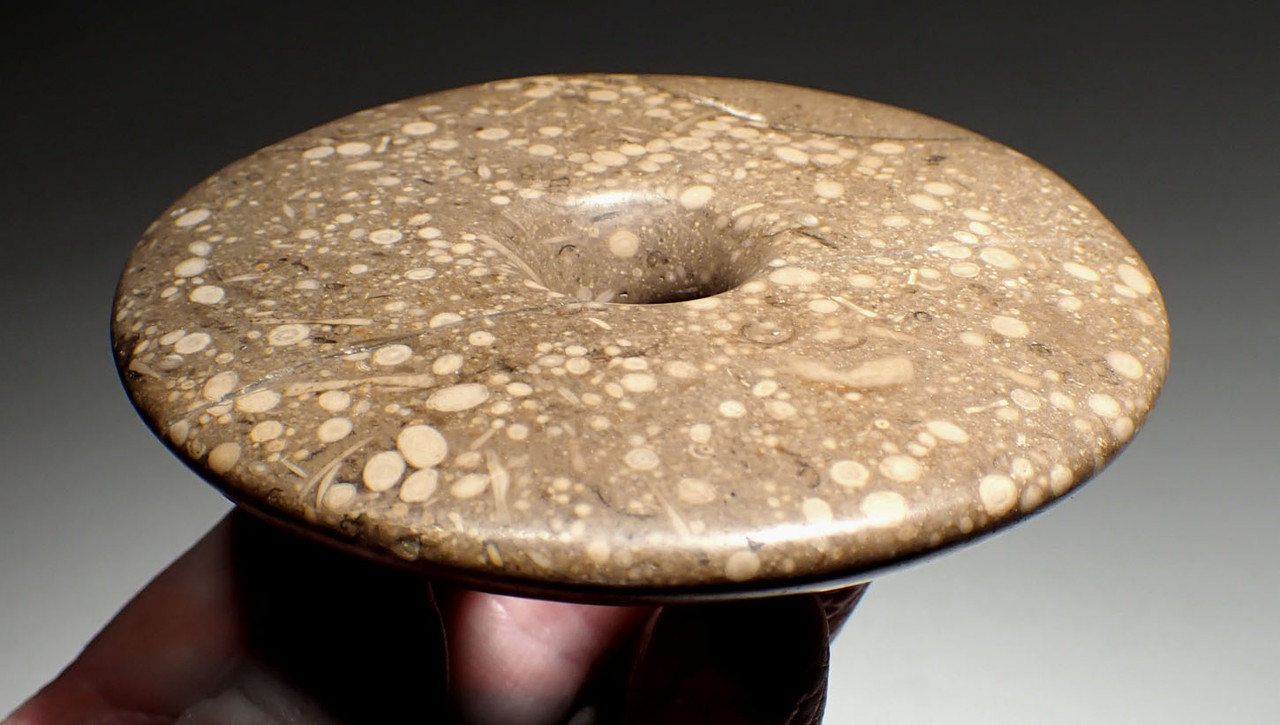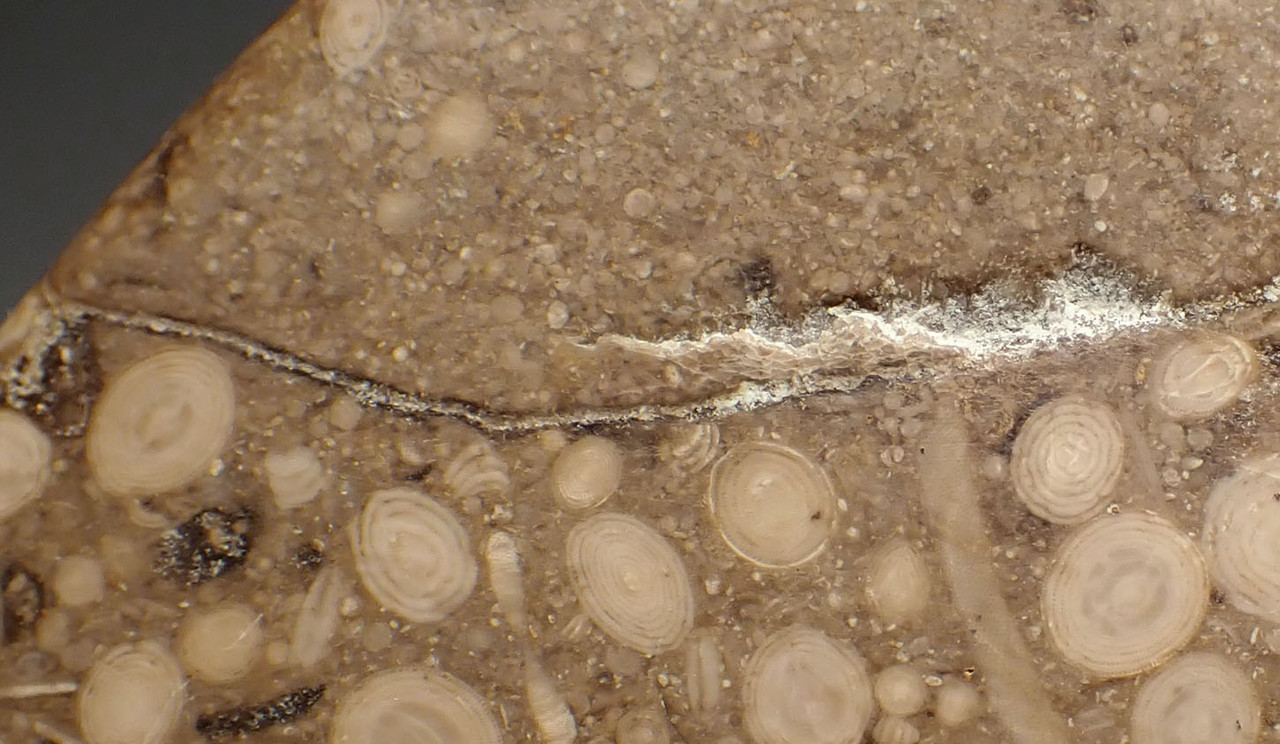Product Description
In 33 years of work with ancient objects, never before have we encountered such an unusual and beautiful ancient Pre-Dynastic Egyptian stone weapon. Masterfully made and polished out of warm light brown fossil-bearing oncolite stone, this disk mace head is the most unique specimen of its kind you will ever encounter. Oncolites are typically formed by cyanobacteria through active or passive precipitation of calcium carbonate. An oncolite is formed when microbes attach to a nucleus or fossil fragment, and encrust it in layers of calcium carbonate. Because of its maximum size and crafting out of such a unique stone, this was certainly a prestige weapon and likely carried by a noble, ruling class warrior. The stone is rare in this form and since the knowledge of fossils or paleontology was non-existent back in the day of this weapon (4000 B.C. - 3650 B.C.), it was likely regarded as an enigma as to its origin, possibly with some mystical connection. The disk mace was the earliest form of mace head in ancient Egypt.
This amazing example has a flattened face on the upper surface with a shallow flared bottom half. The maximum size diameter tapers to a very sharp outer striking edge. The finely drilled center hole allowed the mace head to be mounted to a shaft handle. This very rare perforated disk mace would have made a formidable weapon in its day.
This impressive specimen shows a well-polished finish with various fossilized patterns in the stone. Ancient deposits exist in all micro-crevices - a testament to its authenticity and age. The undamaged tapered outer edge allowed sharp penetration to break bone and crush skulls. This mace head weapon would have been employed by foot soldiers, and mounted warriors on horseback and chariot.
The scarcity of ancient Egyptian weapons on the market demonstrates their immense rarity. Even in museum collections, only very seldom will you see any weapons on display as they are among some of the rarest ancient objects of that culture.
HISTORY
Scant archaeological evidence of Predynastic Egypt exists from 9000 BC to 6000 BC. At the end of the Pleistocene Period in the Nile Region, temperate conditions made for an ideal environment for the birth of a highly specialized Neolithic society between 7000 B.C. and 3200 B.C.. Continued expansion of the desert forced the early ancestors of the Egyptians to settle around the Nile more permanently, and adopt a more sedentary lifestyle during the Neolithic. Around 6000 BC, Neolithic settlements existed throughout Egypt. Studies have determined these settlements were founded by people from the Fertile Crescent in the Near East, moving to the area during the Egyptian and North African Neolithic and bringing farming to the region.
"Predynastic Egypt" is traditionally defined as the period from the final part of the Neolithic period beginning c. 6000 BC to the end of the Naqada III period c. 3000 BC. The dates of the Predynastic period were first defined before widespread archaeological excavation of Egypt took place, and recent finds indicating very gradual Predynastic development have led to controversy over when exactly the Predynastic period ended. Thus, various terms such as "Protodynastic period", "Zero Dynasty" or "Dynasty 0" are used to name the part of the period which might be characterized as Predynastic by some and Early Dynastic by others.
The Predynastic period is generally divided into cultural eras, each named after the place where a certain type of Egyptian settlement was first discovered. However, the same gradual development that characterizes the Protodynastic period is present throughout the entire Predynastic period, and individual "cultures" must not be interpreted as separate entities but as largely subjective divisions used to facilitate study of the entire period.
The vast majority of Predynastic archaeological finds have been in Upper Egypt, because the silt of the Nile River was more heavily deposited at the Delta region, completely burying most Delta sites long before modern times.
 US DOLLAR
US DOLLAR
 EURO
EURO
 AUSTRALIAN DOLLAR
AUSTRALIAN DOLLAR
 CANADIAN DOLLAR
CANADIAN DOLLAR
 POUND STERLING
POUND STERLING


























